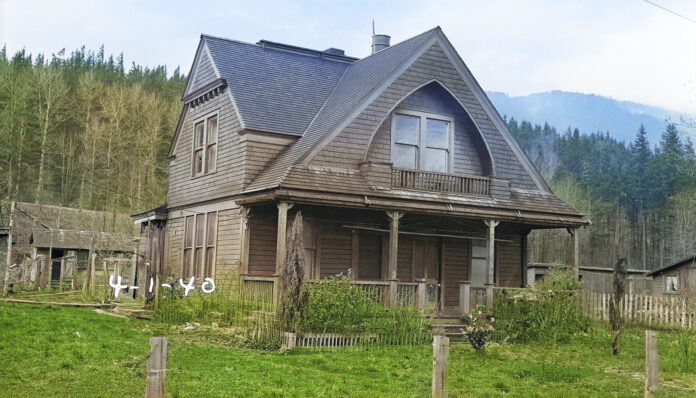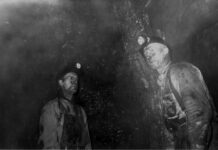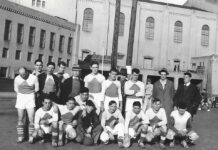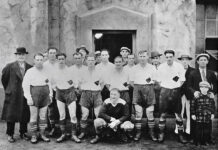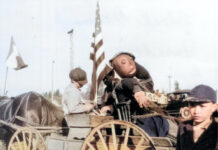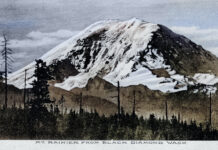This 1910, faux-Victorian style home in Kanaskat was built by the Northern Pacific Railway (N.P.) to house their section foreman and his family. The rail line through Kanaskat was established in 1900 to provide a more convenient route to Auburn. The new route provided more direct links to Tacoma and Seattle. The original 1887 rail line through nearby Palmer connected Eastern Washington to Tacoma, chosen as N.P.’s western terminus in 1873.
In the railroad industry, a section foreman was a key figure responsible for overseeing the maintenance of rail tracks usually over a distance of 10 to 12 miles. The section length depended upon the terrain, number of tracks, and seasonal difficulties like snow or washouts. Given the crucial role of ensuring safe and reliable train operations, railroads typically provided their section foreman with fine homes, via a modest lease with fees ranging from one to $50 per year depending on size and condition. It was a perk of employment.
The section foreman and their crews performed daily inspections. They examined tracks, looking for damaged or loose ties, broken rails, or those in need of straightening, plus cleared brush and debris off the line. The work was often performed using a handcar called a “speeder” to identify problems. The foreman was in charge of the section hands, referred to as “gandy dancers” who undertook the strenuous manual labor of track maintenance. Problems with rails endangered the several trains that passed by daily.
The laborers wielded picks, hammers, spike mauls, and wrenches to affix the steel rails to creosoted ties. In the early years, mainline rail iron was usually 72- or 85-pound, meaning every three feet of a rail weighed 72 or 85 pounds. This contrasts with the 132-pound rail generally in use today. The work was intensive and undertaken in all manner of weather, from scorching heat to frigid snow and windswept rainstorms.
Section hands didn’t rate the same living accommodations as foremen. They typically lived in boarding homes or bunk houses provided by the railroad in station towns like Kanaskat. When out on a job, the gandy dancers would stay in outfit rail cars that provided traveling living quarters with bunk beds, a small kitchen, sink, and sometimes showers.
When this photo was taken on April 1, 1940, the home was likely occupied by a section foreman. As automobiles increasingly replaced railroads for short-distance travel, rail workers began commuting to jobs, and the need for company-provided housing diminished. In time, N.P. permitted signal maintainers instead of section foremen to lease the home. In Kanaskat, Brace Creed, a signal maintainer, was one of the first, and lived here until retiring in 1959. Its next occupant was Glen Cash.
Born in Kamloops, British Columbia on Aug. 19, 1922, Glen Cash was a Canadian citizen whose family moved to Chehalis, Washington in 1928, after Glen’s father, a logger abandoned his wife and children. Cash joined the Navy during World War II where he maintained engines for the Vought F4U Corsair fighter planes. He married Muriel (Hurn) on May 29, 1943. After the war, he worked for Boeing and for a brief time sold vacuum cleaners.
When Glen Cash Sr. was hired on Northern Pacific’s signal gang in 1951, two of the couple’s eventual five children were born, Glen Jr. and Cheryl. He soon left the traveling repair gang and became a signal maintainer in charge of his own territory. The railroad job took the family from Centralia to Cle Elum, then Easton, and back to Centralia, before moving to Kanaskat in Dec. 1959, by which time three more children, Larry, Debra, and Sally were born. Cash took over the lease from Brace Creed. In 1961, Northern Pacific sold the home, but not the land to Glen Cash Sr. for $200. The land upon which the home stood was under an open-ended lease that N.P. could terminate at any time but never did.
Cash’s territory as a signal maintainer with N.P. extended west from Eagle Gorge to Covington. The position was critical for two distinct purposes. They maintained vehicle crossing signals at every highway intersection, plus the Automatic Block Signals along the right of way – the semaphores and red-yellow-green train signals visible to the locomotive engineer that indicate whether tracks ahead are clear. In addition, written ‘Train Orders’ issued by dispatchers through station telegraph operators, along with timetables, helped prevent train collisions. But, the wayside signals served as a ‘fail-safe’ backup in case of error. The railroad signal system, much like today’s air traffic controllers is critical to preserve safety.
According to Glen Cash Jr. who lived in this two-story home during high school, there was no central heating. During cold winter nights, the single-pane windows in the three upstairs bedrooms froze and bore a thick layer of inside ice by morning. Their second son, Larry recalled, “The house would shake when trains went by.” One curiosity about the picture – the cylinder-shaped fixture atop the roof isn’t a smokestack – it’s a barrel filled with water to fight fire should one break out. The Cash family lived next door to Lloyd & Clara Winsor who also occupied a railroad home. Next to the Winsors lived the Hernandez and Aydelott families.
On Sept. 29, 1974, Glen, age 52, finished cutting a truckload of firewood rounds on property owned by fellow railroad employee, Dave Sprau who lived nearby in Kanaskat. After delivering the wood to his daughter, Cheryl in Federal Way, Glen Cash Sr. suffered a heart attack and dropped dead while splitting wood. His widow, Muriel lived in the home until 1976, at which time Larry Cash and his wife, Gail (Hill) moved in. The home was sold to Joe Cinkovich, a bricklayer in 1979.
This house still stands in Kanaskat at 33724 S.E. Hudson Road (tax parcel #102107-9138). Today it’s owned by Robert & Jennifer McCulloch who purchased it in 2016. Details about a section foreman’s job were provided by Dave Sprau, a 40-year railroad veteran. Glen Cash Jr., Larry Cash, and Sally Cash provided information about their family life in Kanaskat. Photo enhancements and colorization were undertaken by Boomer Burnham, a Tahoma photography instructor doing business as http://www.boomersphotography.com/

